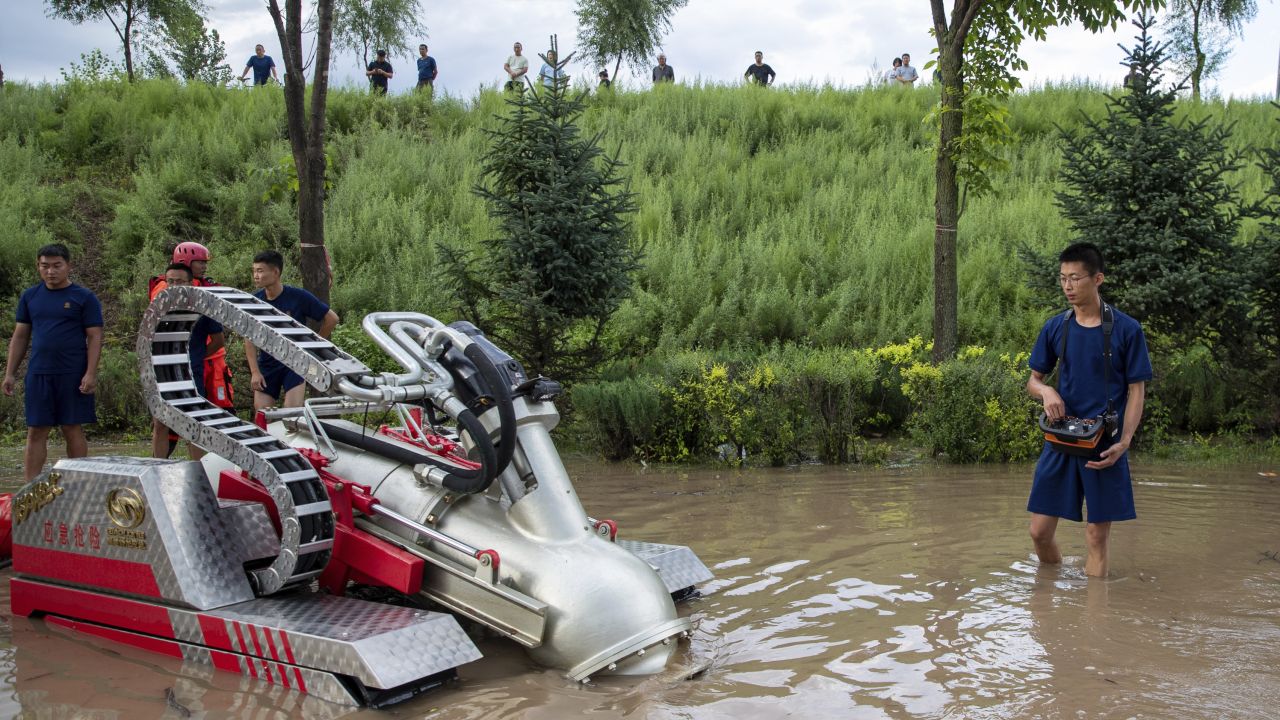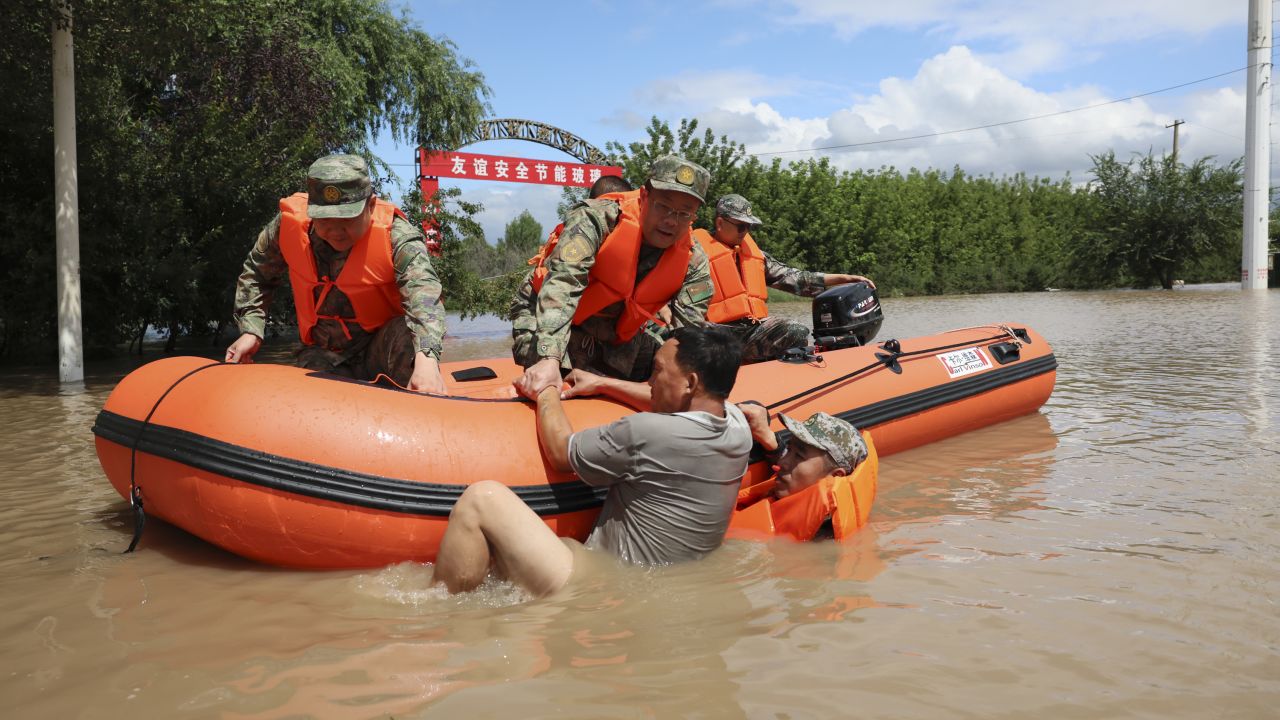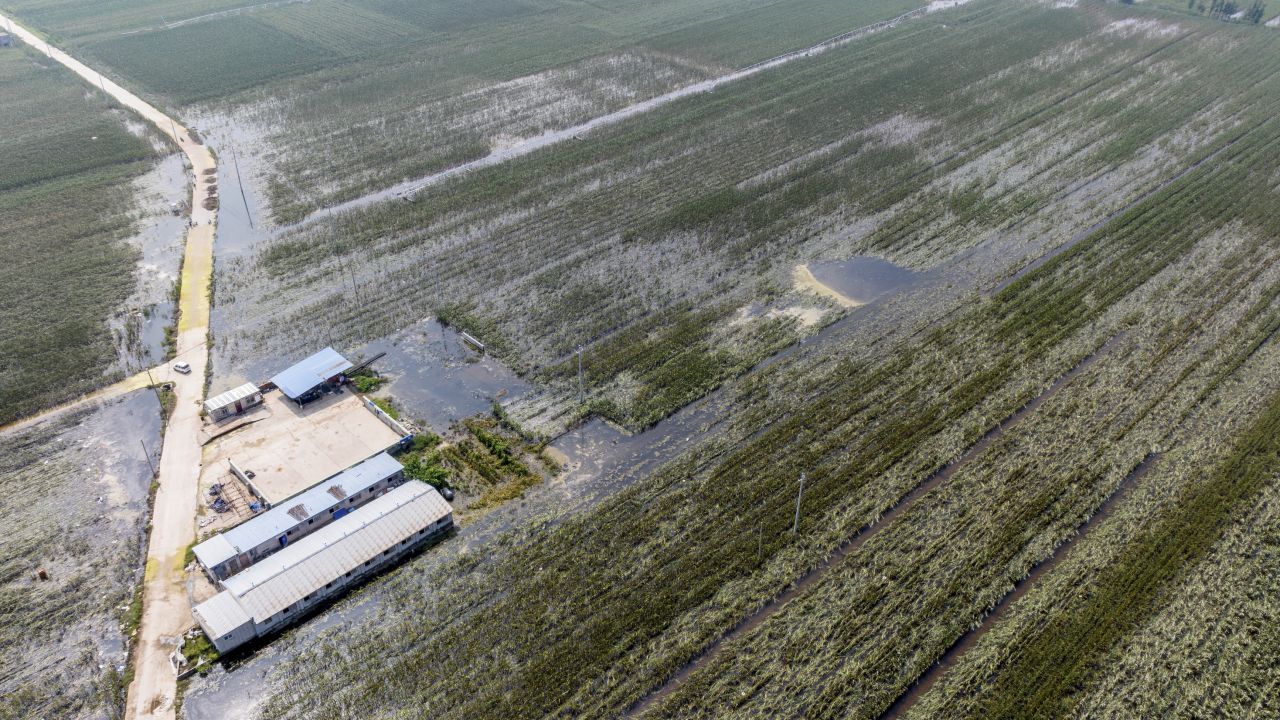Days of heavy rain have caused severe flooding in China’s leading grain-producing region in the northeast, killing 14 people and raising concerns about food security as floodwater inundated farmlands.
Torrential rains brought by the aftermath of Typhoon Doksuri have battered northern China since late July, displacing more than a million people and killing at least 30 people in the outskirts of Beijing and the surrounding Hebei province.
As the storm moved further north, another 14 deaths were reported Sunday in the city of Shulan in Jilin province.
Among the dead were three local officials, including the city’s deputy mayor, who were washed away by floodwater during rescue operations last week, Shulan authorities said in a statement. One more official remained missing, it added.
More than 18,000 people have been evacuated from Shulan, according to state-run news agency Xinhua.
Further north in the neighboring province of Heilongjiang, rivers that irrigate its fertile farmlands overflowed, submerging rice fields, destroying vegetable greenhouses and damaging factories, state media reported.
Across the province, 25 rivers have exceeded warning levels and threatened to burst their banks, according to Heilongjiang authorities.

Firefighters operate a drainage machine near a village in the city of Mudanjiang in northeastern China’s Heilongjiang province on August 5.Zhang Tao/AP
On Sunday, China’s Ministry of Water Resources raised the emergency response for flooding to Level 3 for Jilin and Heilongjiang provinces – the third most urgent in a four-tier emergency response system.
In Harbin, the provincial capital of Heilongjiang, more than 162,000 people were evacuated, while over 90,000 hectares of crops were damaged by floodwater, reported People’s Daily, the mouthpiece of the ruling Communist Party.
In the city of Shangzhi, more than 42,575 hectares of crops were destroyed by the worst rainstorm the city has faced in more than six decades, Xinhua reported.

China’s granary
Numerous villages and large areas of farmland were also flooded in the city of Wuchang, another major rice producing city in Heilongjiang, and authorities there are still counting the damage.
The flooding of farmland has added to concerns about the potential impacts on food security in the world’s second largest economy, as extreme weather events linked to climate change pose rising threats to China’s agricultural and food supplies.
Known as China’s granary, the three northeasternmost provinces – Heilongjiang, Jilin and Liaoning – produce more than one fifth of the country’s grain output, thanks to the region’s fertile black earth. Major crops produced there include soybeans, corn and rice.
Last week, the Ministry of Agriculture and Rural Affairs warned that the heavy rainstorms brought by Typhoon Khanun and Typhoon Doksuri were expected to cause “severe impact” on China’s agricultural production.

The devastation to the rice fields in northeast China came after heavy downpours in late May flooded Henan province, another major grain-growing region that produces about a third of the country’s wheat.
The Henan authorities said the flooding there was the most devastating rain event for wheat production in the past decade, according to state media.
Those downpours, which hit right before the harvest, resulted in a 0.9 percent drop in China’s summer wheat output this year – the first decline in seven years, according to the National Bureau of Statistics.
The ensuing heat waves that scorched much of northern China and smashed temperature records in June brought droughts that hampered the growth of young crops such as corn and soybeans, officials from the China Meteorological Administration told a news conference last month.

In the short-term, these hits to China’s agriculture sector are expected to impact food prices, which had remained relatively stable in recent months, mainly because deflationary risks have been rising in the Chinese economy in stark contrast to the ongoing battle with inflation in much of the rest of the world.
Last week, China lifted anti-dumping tariffs on Australian barley imports, which were imposed in 2020 at the height of diplomatic tensions between the two countries.
China experienced its worst heat wave and drought in decades during the summer of 2022, which caused widespread power shortages and disrupted food and industrial supply chains.
Since then, Beijing has strengthened its focus on food security. In March, Chinese leader Xi Jinping said agriculture was the foundation of national security.
“Once something’s wrong with agriculture, our bowls will be held in someone else’s hands and we’ll have to depend on others for food. How can we achieve modernization in that case?” he said in an article published in March by Qiushi, the Communist Party’s main theoretical journal.
Source : CNN















